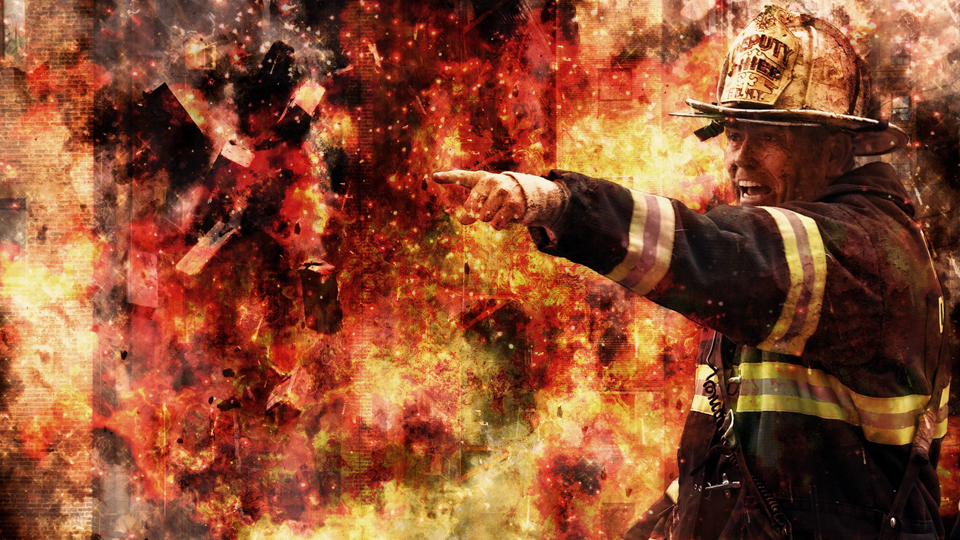Three Points on Disaster Response and Easter Sunday
Matthew 28 says: The angel said to the women, “Do not be afraid, for I know that you seek Jesus who was crucified. 6 He is not here, for he has risen, as he said. Come, see the place where he lay. 7 Then go quickly and tell his disciples that he has risen from the dead, and behold, he is going before you to Galilee; there you will see him. See, I have told you.” 8 So they departed quickly from the tomb with fear and great joy, and ran to tell his disciples. 9 And behold, Jesus met them and said, “Greetings!” And they came up and took hold of his feet and worshiped him. 10 Then Jesus said to them, “Do not be afraid; go and tell my brothers to go to Galilee, and there they will see me.”
It’s passages like this that make me think of the Bee Gees. They were famous for their falsetto voices. I know if I had been outside of that tomb when the angel appeared, you would have heard falsetto screaming and then some coming from me. Screaming like a little girly-man would have only been the beginning. Maybe it would have been different if I were used to seeing miracles and the face to face intervention of angels in my daily life, but I don’t think so. Especially after witnessing what happened on Good Friday and then hearing what the angel had to say about Jesus reversing all of the horror that had been given to Him that day. Hyperventilation would have been the mildest of words that people used to remember me that day.
Easter Sunday is a day of celebration for us, because we weren’t there and we have the luxury of recognizing the significance of what happened without having to deal with the pandemonium that was certainly rampant for those disciples. I think we take the chaos of the day for granted. Trying to harmonize a time line for that Sunday is difficult, because when we read the different Gospel accounts at face value, it seems to all happen in time to still sit down for brunch. When we read the text, we get a sense that all of these things happened within an hour or two, but it’s more likely that it happened over a significant portion of the day.
Chances are, the two Marys had probably left for Jesus’ tomb earlier on that Easter Sunday than we realize. When everything started happening, they didn’t have the luxury of cars to quickly get to where they needed to be, and I’m sure that Jesus’ tomb wasn’t that close to where the disciples were at. The disciples may have been in a lot of different locations around Jerusalem and the surrounding countryside by that time as well, which would have made coordination that much more difficult. There was no Facebook, or cell phones, or carrier pigeons to get the message to the other disciples faster than testing their ability to run a 5K. And then, when they encounter Him, Jesus says for them to tell the other disciples to make a 60-90 mile trek in haste to see Him in Galilee. It would have been a whirlwind of a day, filled with fear, uncertainty, and a lot of walking and running. It would not have allowed for much processing of the emotional state that they were in.
There’s no way to fully comprehend how the disciples dealt with all that was given to them in such a short time. There’s never been a day quite like it. Even if you were a first responder on 9/11, at Peal Harbor after the Japanese planes had left widespread devastation and countless people needing assistance, or you were charged with being the calm voice of reassurance after a terrorist’s bomb goes off, nothing quite compares with someone you know coming back from the dead and saying, “Now coordinate all of these efforts, oh yeah, while you yourself are trying to process the impact it is having on you.”
But if we analyze the brief words of Scripture that tell us of those early hours after the Resurrection, I believe we can garner some principles of response readiness:
(1) The fog of war takes time to contain
It was just the two Marys, because we know that the soldiers who should have accepted what their eyes saw and other senses received in full did not do the right thing. The angel told the faithful to assess what was going on, then go and respond. They may not have had the resources of the Roman Empire on their side to get the word out, but they were faithful, and that is what God needed. It took time, but that is how disasters are conquered.
Even when we are as connected as we are, when seismic events happen, people become disconnected. When there are too many things to do or think about and not enough people to do them, limited resources give way to feelings of inability and inadequacy. But what starts with a few people who see how things are connected or disconnected, they can start to put actions into place that help limit the spread of more panic and damage.
(2) Fear often trumps words of comfort
In the book of Revelation, the first inclination when seeing the angel of God was to worship Him. When the two Marys encounter Jesus, it’s no wonder that that they immediately grabbed Him by the feet and “worshiped” Him. I’d have been terrified to see Him alive and well, calm and peaceful, saying, “What’s up!” like it was no big deal. It was after this fear-induced circumstance of worship that Jesus said, “Do not be afraid.” He didn’t want them to be frightened, but encouraged.
It’s human nature to let our emotions overwhelm us. A level head takes practice, and even the most calm and collected of people have those days when it’s too much. For many people, when they’ve reached their breaking point, fear supersedes comfort. The nature of the stressor takes control, even when the stressor would seem to be a good thing. Grief has not had time to be addressed satisfactorily, and when the hysteria of others impacts you as well, comfort is hard to receive. At that time, we can only trust what the Lord reveals to us, slowly but surely allowing the positives to dissipate the panic.
(3) Either we will want to be a part of history in the making or not
The two Marys could have succumbed to the panic. But they trusted that Jesus had called them for a reason. Later Peter and John would go to the tomb as well, trying to process how they fit into Jesus’ plan for post-Resurrection work. First they had to assess the situation and they would have to trust that they had a place to do something. But they were not rubberneckers. They got involved.
Some people will stick around to help, others will leave, and others will succumb to the chaos. Some accept the mantle of “leader” while others prefer to let someone else direct. Knowing you are not a leader does not make you failure. It helps define your role in what is coming or happening at breakneck speed. It does not mean you are unwilling to help, just that you realize your limitations. Trying to be a leader when you are not can hurt the overall effort, but asserting yourself may help you see some gifts that you might not realize you have. We are prone to having inferiority complexes about ourselves, and catastrophic situations can heighten that. In the midst of a situation that is far from being in control, tread lightly and know thyself.
—————
Let us give thanks for early responders in crisis situations. They help make the headlines we see less devastating than they could have been. Let us give thanks for the helping hands that organize humanity away from shell we would prefer to be in when these situations happen. The Resurrection was an opportunity, but we must remember that it was a day filled with what-ifs and uncertainty. Courage, fortitude, hope, and determination helped make sure that Jesus’ resurrection message was not a disaster. Amen.




Recent Comments